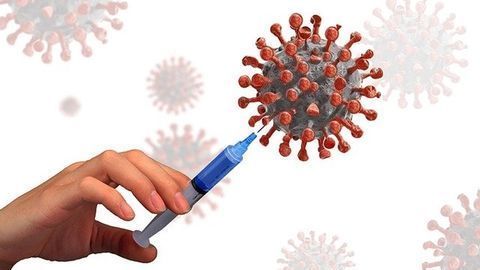COVID-19 Variant and Time Affects Reinfection, According to Recent Study
COVID-19 reinfection chances vary to variant and time since the previous infection, according to a new study.
COVID-19
(Adobe Stock, anon)

This article was first published in ContagionLive.com.
Of all the pressing questions roused by the COVID-19 pandemic, one looms large: does a prior infection protect you from reinfection?
A new study, published in The Lancet, sought to understand the level and characteristics of protection from a past COVID-19 infection against reinfection, symptomatic infection, and severe or fatal disease. The objective was to systematically synthesize prior studies to estimate the protective effect of past infection by variant and by time elapsed since the original infection.
The systematic review and meta-analysis identified scientific literature retrospective studies, prospective cohort studies, and test-negative case-control studies. From these papers, the investigators reviewed the data and extracted estimates of the risk of reinfection after COVID-19 infection.
Studies were identified from myriad databases and peer-reviewed publications using the keywords “COVID-19,” “SARS-CoV-2,” “natural immunity,” “previous infection,” “past infection,” “protection,” and “reinfection.” Included papers were published from the beginning of the pandemic through September 31, 2022.
The investigators meta-analyzed the effectiveness of past infection by outcome (infection, symptomatic disease, severe disease), variant, and time since infection. They ran Bayesian meta-regression to calculate the pooled estimates of protection.
A total of 65 studies, collected from 19 different countries, fulfilled inclusion criteria and were subjected to analysis. The investigators found that past infection protected against symptomatic disease from the ancestral Wuhan strain, and the Alpha, Beta, and Delta Variants of Concern. Protection against reinfection from these variants gradually declined over time but remained at 78.6% at 40 weeks.
However, pooled effectiveness against Omicron reinfection was only 45.3%. There was also significantly less reinfection protection against Omicron BA.1 symptomatic disease (44.0%). At 40 weeks, protection against Omicron reinfection was 36.1%.
The average pooled effectiveness was more than 78% against severe disease (hospitalization and death) from all studied variants: the ancestral strain, Alpha, Beta, Delta, and Omicron.
Notably, protection against reinfection that devolved to severe disease was very robust, 90.2% at 40 weeks for all studied variants other than Omicron. Even for Omicron BA.1, however, reinfection protection was very high: 88.9% at 40 weeks.
The investigators concluded that pre-Omicron, past infection was very effective against COVID-19 reinfection. Though protection against Omicron reinfection was drastically lower and decreased more rapidly over time, protection against severe disease was high for all variants.
These findings led the study authors to argue the immunity from a past COVID-19 infection should be weighed alongside protection from vaccination when predicting the future disease burden of COVID-19. Indeed, the robust protection against severe disease seen in recovered COVID-19 patients may help guide vaccination recommendations.